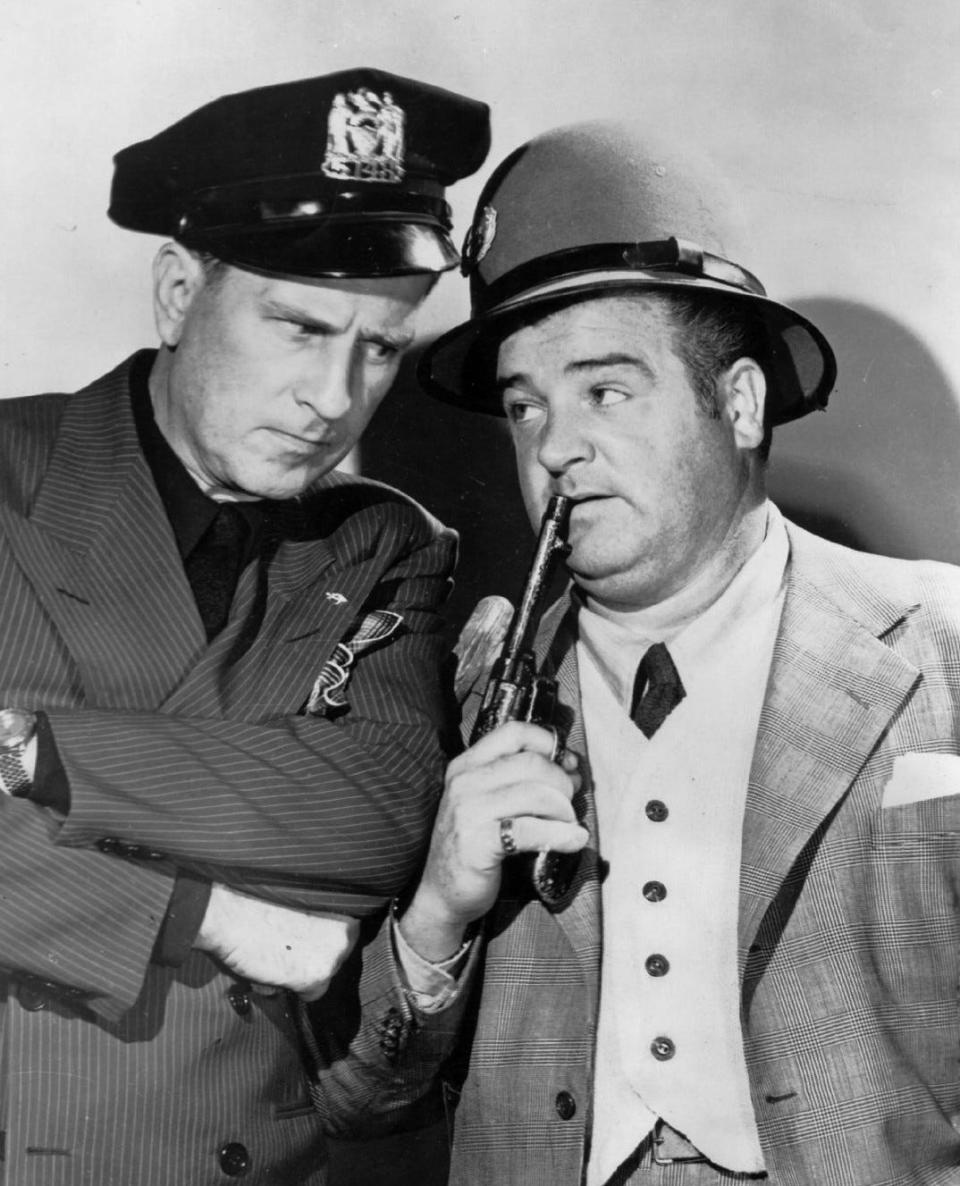When times get hard remember Lou Costello’s 'Do You Know the Way to San Jose' days
- Oops!Something went wrong.Please try again later.
“Do You Know the Way to San Jose” is a popular song written by Burt Bacharach and Hal David, and sung by Dionne Warwick. It’s about a native of San Jose, California, who went to Hollywood with high expectations of becoming a star, but whose dreams did not materialize and now she’s returning to her friends left back in San Jose.
I especially like the part where it says, “And all the stars that never were, are parking cars and pumping gas.” That pretty well describes Lou Costello’s experience when he first went to Hollywood.

We know Lew Costello eventually became a big star. He was one of the highest paid actors in Hollywood in the 1940s. But his experience in 1927 when he first went to Hollywood at age 21 was much different. He was able to get a job when he got there as a laborer at MGM, and because he was athletic, he did get some work as a stunt man.
But his daughter Chris, in her book about him said this about his experience then: “A friend who operated a parking lot let him sleep in cars at night until he could save enough money to get an apartment and then it was some time after that he could finally get the gas and lights turned on…In order to save money to have his utilities turned on, for an entire month he ate nothing but bread and jam.”

After a year, Lou realized he wasn’t going to be the next big star, so he sets out hitchhiking back to his hometown of Paterson, New Jersey. He gets as far as St. Joseph, Missouri, where he ran out of money. But he sees a sign in a restaurant that read, “Dutch Comic wanted. Inquire at the Lyceum Theater,” which was right across the street.
He applied and got the job. At that point he had never been on stage before but when talking about this he always said, “that a hungry man can perform tasks he never knew he was capable of.”
Writer Jim Mulholland said it was in this job that Lou developed his stage persona. “In those politically incorrect days, the Dutch immigrants were the butt of a lot of jokes because they didn’t understand the language and the double meanings of some words and everything had to be explained to them.” Lou’s stage character is like that. “He’s like an immigrant, he’s confounded by language and words and directions.”
An example of Lou’s stage character getting confused by the meaning of words is in the comedy sketch he did later with Bud Abbott about the “mudder.” A mudder is a horse that runs well in wet or muddy conditions. In this sketch Bud says of a horse named Bazooka, “He’s a good mudder.”
Lou asks, “How can a he be a mudder? (Lou is thinking “mother.”) Bud tells him, “Sometimes a he is a better mudder than a she. The more Bud tries to explain the more confused and frustrated Lou becomes and the more the audience laughs.
Lou worked at the Lyceum theater for over a year honing his craft. From there he would go on to become a comic in burlesque where he would meet and team up with Bud Abbott in 1936, and they would become the famous comedy team of Abbott & Costello.
Lou would return to Hollywood with Bud and they would become stars in more than 30 movies. Lou is a great example for us of someone who never gave up on his dreams. Maybe his story will inspire a follow-up song that might be titled “The Way Back from San Jose.”
Rick Dominy, who has been preparing for a speech on Abbott & Costello in April, is a resident of Gaston County and can be reached at 704-675-4862 or humorick007@gmail.com.
This article originally appeared on The Gaston Gazette: Lou Costello’s 'Do You Know the Way to San Jose' Days

